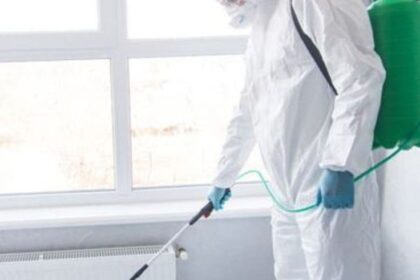The liver doesn’t often complain. It’s one of the hardest-working organs in the body — processing toxins, storing nutrients, breaking down fats — and it usually does all this quietly, without drama. That’s why when something begins to go wrong, it often goes unnoticed… until it doesn’t.
One of the most common early signs that the liver is under pressure is fatty liver disease. But the story doesn’t end there — not if it’s left unchecked. This condition can silently progress over years, evolving from a manageable state into something far more serious: NASH (Non-Alcoholic Steatohepatitis) and eventually, cirrhosis.
Understanding this progression is key to recognizing the turning points — and knowing when, and how, to act.
A Quick Recap: What Is NAFLD?
Non-Alcoholic Fatty Liver Disease (NAFLD) is a condition where excess fat builds up in the liver in people who drink little or no alcohol. It’s disturbingly common — affecting about 1 in 3 adults globally — and often linked to lifestyle factors like obesity, insulin resistance, high cholesterol, and poor dietary habits.
For many people, NAFLD doesn’t cause noticeable symptoms. It’s often discovered by accident during a health screening or routine blood test. But even if it feels harmless at first, it’s far from benign.
Stage 1: Simple Fatty Liver (Steatosis)
This is where it all begins — with fat quietly accumulating in liver cells. In this early stage, the liver is still functioning normally, and there’s typically no inflammation or scarring. It’s completely reversible at this point, especially with changes in diet, activity, and weight management.
But here’s the catch: if nothing changes, the fat can start triggering immune responses. And that’s when things shift.
Stage 2: NASH – When Fat Triggers Inflammation
Non-Alcoholic Steatohepatitis (NASH) is a more severe form of NAFLD. At this point, the fat in the liver begins to irritate the tissue, leading to inflammation and damage to liver cells.
Unlike simple fatty liver, NASH can cause:
-
Liver cell injury
-
Inflammation
-
Fibrosis (scar tissue starting to form)
Some people with NASH still don’t feel any symptoms. Others may begin to experience fatigue, discomfort in the upper right abdomen, or unexplained weight loss. Blood tests may reveal elevated liver enzymes, indicating that the liver is under stress.
At this stage, damage is no longer purely fat-related — it’s structural. The liver is fighting back, and if it loses, the scarring continues to grow.
Stage 3: Fibrosis and Early Scarring
When liver cells are repeatedly injured, the body tries to repair them. But in doing so, it lays down scar tissue — a process called fibrosis. Early fibrosis might not affect liver function significantly, but it’s a red flag.
If lifestyle changes are made here, fibrosis may be slowed or even reversed to some extent. But if ignored, it can spiral further — into the final, most dangerous stage.
Stage 4: Cirrhosis – When the Liver Shuts Down Its Silence
Cirrhosis is advanced scarring of the liver — a state where the architecture of the liver is permanently altered. At this point, the damage is no longer reversible. The liver becomes stiff, nodular, and loses its ability to function properly.
Symptoms often appear only at this late stage and may include:
-
Jaundice (yellowing of the skin and eyes)
-
Swelling in the legs or abdomen
-
Easy bruising or bleeding
-
Mental confusion (hepatic encephalopathy)
In some cases, cirrhosis can lead to liver failure or liver cancer. It’s a life-threatening condition that may require a liver transplant.
Why the Progression Happens — and How to Stop It
Not everyone with fatty liver disease will develop NASH or cirrhosis. But the risk increases significantly if certain factors are present:
-
Type 2 diabetes
-
Obesity, particularly abdominal fat
-
High blood pressure or cholesterol
-
Poor diet (high in sugar, refined carbs, and saturated fat)
-
Sedentary lifestyle
The encouraging news? At every stage before cirrhosis, there’s still a chance to pause — or even reverse — the damage. Early detection and lifestyle modification remain the most powerful tools.
What You Can Do Right Now
If you’ve been told you have a fatty liver, or even suspect it based on your risk factors, you don’t have to wait until symptoms appear. Here are steps you can take today:
-
Get screened – A liver ultrasound and liver function tests can give you a clearer picture.
-
Talk to your doctor – Especially if you have diabetes, high blood pressure, or excess weight.
-
Make sustainable lifestyle changes – Focus on whole foods, regular movement, and weight loss if needed.
-
Limit processed sugars and alcohol – Even though NAFLD is “non-alcoholic,” alcohol can still worsen liver health.
-
Stay consistent – Progress may be slow, but your liver appreciates every step in the right direction.
Final Thoughts
The progression from NAFLD to NASH to cirrhosis doesn’t happen overnight. It unfolds quietly over years — giving us a window of opportunity to intervene, shift direction, and heal.
The key is awareness. The liver might not shout, but it speaks — through test results, subtle discomforts, and patterns in our health that we often overlook. Listening early makes all the difference.
So if you’ve heard the term “fatty liver disease” — either from your doctor or a passing comment — don’t panic. Get curious. Ask questions. And most importantly, take that knowledge as an invitation: to nourish your body, protect your liver, and rewrite your story before it ever reaches the last chapter.



